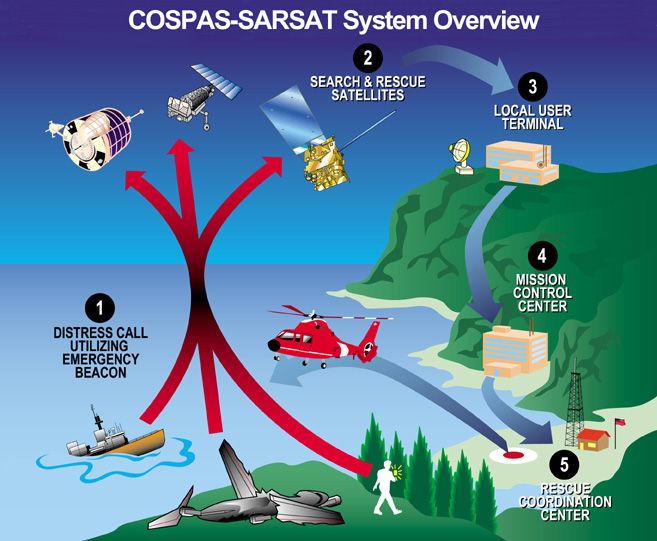
As U.S. pilots slowly begin to phase out old 121.5 MHz emergency locator transmitters and upgrade to 406 MHz units, NASA already is starting to bring the next generation of distress-signal technology online. The Search and Rescue Mission Office at NASA’s Goddard Space Flight Center in Greenbelt, Md., has developed a satellite-based system that will be able to almost instantaneously detect and locate distress signals generated by 406 MHz beacons installed on aircraft. NASA said this week it is now testing the system and it will begin the transition to it in 2015. Under the current system, ELT signals are received by weather satellites, but the new system will be incorporated into two dozen GPS satellites, which fly in higher orbits. “With a mid-Earth orbit search-and-rescue capability provided by GPS, one emergency signal goes off, and six satellites will be in view,” said Mickey Fitzmaurice, space systems engineer for NASA. “Almost instantly, I can begin processing the signal to determine its precise location. Right now, it can take an hour or more before we can even act on a signal.”
As of February 2009, distress signals from 121.5 MHz ELTs are no longer transmitted by satellites. However, transition to the new 406 MHz units has not been made mandatory in the U.S., though it seems likely they will soon be required in Canada. AOPA noted this week that for ELTs to be effective, they should be registered so rescuers can immediately access information about the sender of the signal.
Robert Hackman, AOPA’s senior director of regulatory affairs, spoke with AVweb‘s Mary Grady this week to update general aviation pilots on what they need to know. Click here for the podcast.


































